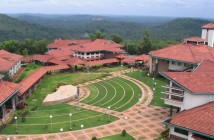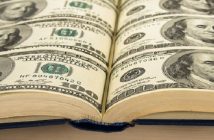Fees for MBA programs have been on the rise across the globe, but applicants numbers keep increasing every year. While some experts say the more expensive degrees are seen to be having more value, yet others point out that program quality is what matters ultimately.
India, with a mix of government-funded Indian Institute of Management (IIMs) and private sector Business Schools, saw fee hikes by 7-30% that translates to fee hikes of Rs. 46,000 to Rs. 3.2 lakh, depending on the institution. Between 2007 and 2016, fees have gone up by 12% to 19%.
Meanwhile, on the other side of the world in Canada, the Montreal-based McGill University’s Desautels Faculty of Management had hiked its course fees fourfold during the past six years, from C$ 22,000 to C$ 79,500. It now claims to have become self-funded institution with a rise in the number, global diversity and quality of students.
Don Melville, MBA and Masers programs director Don Melville told FT.com that the fee hike had raised the perception of the course’s value. Applications at the Institution saw a rise of 15% during the past 12 months.
Back in India, the latest round of fee hikes has increased cost of management education almost five-fold at IIM Ahmedabad (Rs. 19.5 lakh) and IIM Calcutta (Rs.19 lakh) respectively.
The fee hikes are expected to continue considering the high costs involved. A lot of money goes into case studies, faculty salaries including visiting professors and international collaborations where students and teachers get exposure to other markets, Rohin Kapoor, director at Deloitte in India told Economic Times.
With graduates of top Business schools in India managing to get average staring annual salary of Rs 13-18 lakh, they would not find it difficult to repay student loans. For those from economically weaker sections, there are fee waivers.
The fee increases in Indian institutions are expected to stabilise in line with the trend in developed countries where tuition fees for management programmes have already reached a certain level, with increases limited to 3-4%, usually in line with cost inflation, Kapoor said.
In the United States, the average fee in 2016 for the top 25 schools is $118,468, an increase of 81% over that of 2006, as seen in Financial Times rankings data. The schools are using scholarships to attract talent, often being offered to more than half the MBA year group.
Among the B-schools that charge more than $200,000 as the total cost of a full-time MBA programme across the world are New York University’s Stern Business School, Stanford University’s Graduate School of Business, Columbia Business School and Wharton School of the University of Pennsylvania.
In Europe, a desire to keep education affordable and accessible, has to some extent, kept costs down compared to American programs. However, when Belgium lifted caps restricting Universities from raising fees significantly, institutions like Vlerick Business School in Ghent hiked fees for its one-year program to Euro 37,000. The school used to charge only Euro 15,000 in 2005.
ALSO READ: NIRF 2016, All’s Not Well With The Rankings
In this case too, the school found that with the fee increase, students perception changed significantly and it was being seen as a better value program.
Europe has the advantage in most of the institutions offering one-year MBA courses that works out to benefit students financially. Thus, while INSEAD fees for the one-year course has climbed to Euro 71,000 after being hiked by 5% almost on an yearly basis, it remains lower than the 2-year programs at top US schools.
However, at the end of the day, it is quality of the course that adds value to the program, according to Andrea Massini, Associate Dean, HEC, Paris.




